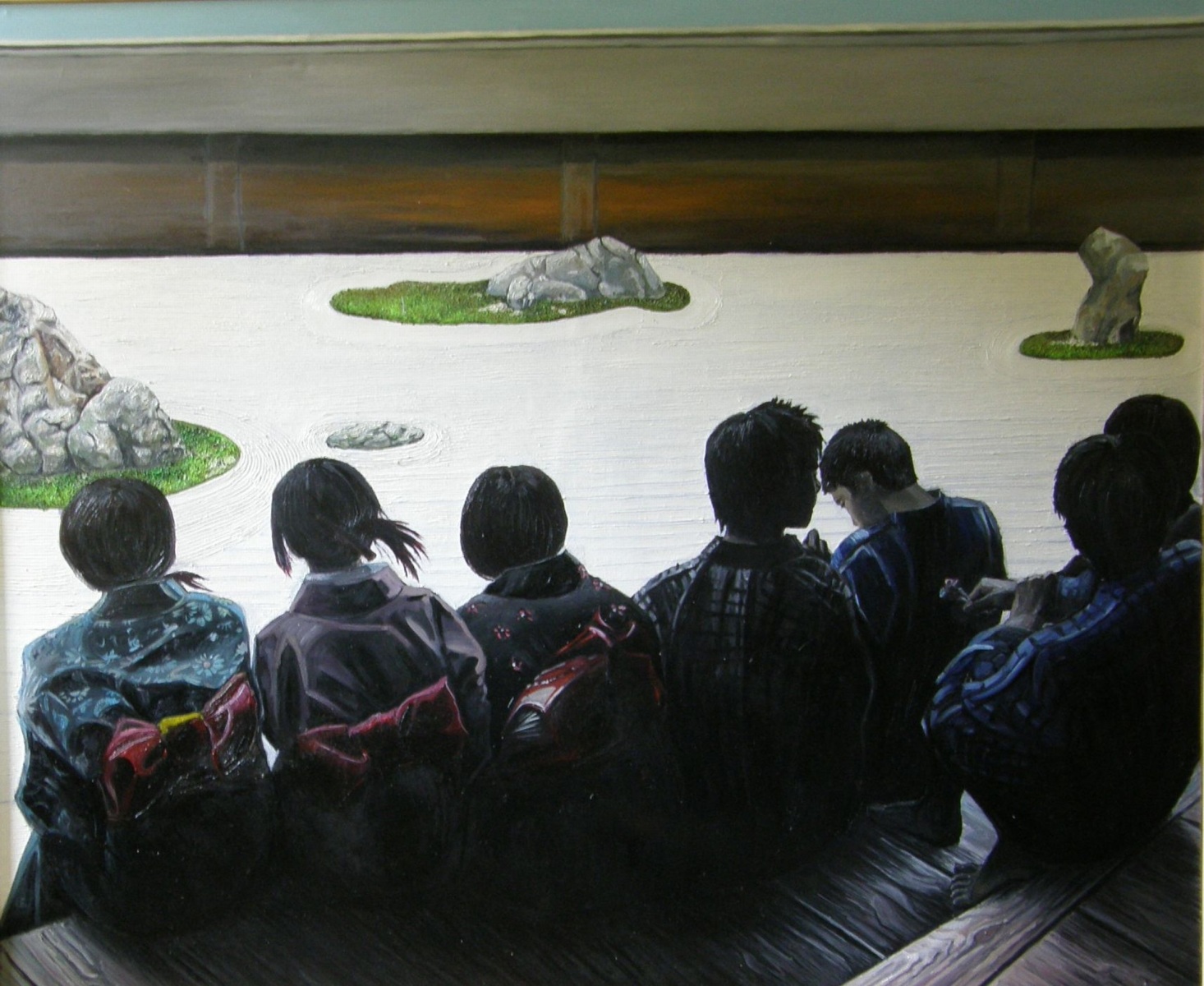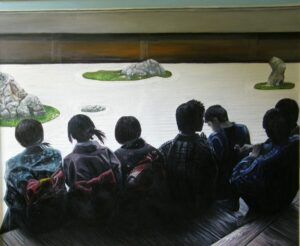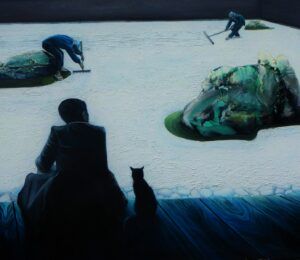words by Iwa Kruczkowska-Król
Like any modern person, I use the essential tools and opportunities that the Internet gives us, and my actions are not significantly different from those of other users. However, I have several insights into using these excellent tools. Nowadays, in the post-pandemic period, which, by imposing a quarantine on us, condemned many artists to even greater isolation, we have seen a massive shift of many events to the web, facilitated by numerous grants and scholarships that motivate artists to go online (to create workshops, concerts and exhibitions online). I see many of these activities as a valuable experiences, which taught us how to create such events, how to build a 3D exhibition space through particular sites, in which it was possible to show the works of many artists from different parts of the world in a very simple and virtual way, at a low cost and with a significant visual effect deceptively similar to the space of a real gallery, even allowing a virtual walk-through. Many groups emerged to support artists in their work, and even online artist residencies began to organise. The time of isolation and the need to work remotely has unleashed creative solutions in many of us, and meeting online is now quite normal. The world has shrunk; via the Internet, you can participate in many exhibitions simultaneously, but importantly, artists finally have unlimited access to information, and there are many proposals worldwide. Various open call groups, exhibitions, symposiums, residencies – everything is at our fingertips, including various art galleries offering online sales of works and online art auctions. It’s all great – it gives us so many opportunities, so many that we can’t possibly take advantage of them all. Virtual tours of museums are now quite common. An interesting phenomenon for me is the offer of workshops in painting and handicrafts through online courses and videos. These offerings range from attractive offerings on art history and painting technology to learning tricks (which are probably the affliction of many art teachers because how do you explain the basics to a student when he or she wants to take shortcuts to create a showy waterfall with a toothbrush).
This multitude of proposals automatically translated into their quality as well. There were some very interesting and edifying projects – often created hybrid off and online – integrating artists from different countries, working on the principle of artistic interaction, shows and exhibitions. Unfortunately, there have also been a lot of mediocre projects, which, although bearing the hype of a “biennial” or “triennial,” were in fact, only amateur activities, which were directed only at the material profit of their creator and the display of images on the private profile of one of the social networks, while the naive participants in these “exhibitions” received prizes and certificates for a fee.
I myself have been fooled by these actions a few times; that’s why I know what I’m writing about. I see a great danger in this. Firstly, we are making our work available to someone else. Secondly, it is a trap for success-seeking artists, who easily succumb to the illusion of a “world career” if only their work appears on some foreign site or they are sent an electronic certificate of participation – which in fact has little value, it is just one of many files from a graphics program, into which more names and photographs of faces are inserted. Strange kinds of groups also operate similarly, like sects recruiting artists into their ranks by giving them bizarre titles of members, ambassadors, etc. – This is a bit like the well-known financial pyramids – only in this case, no one except the founder of such a group, knows what it’s all about. The last of my favourite sections is the bizarre foundations that nominate artists for awards. They offer an elegant award gala, at which an artist, press, television, and a gala dinner will be designed to create the illusion of the world from colour magazines so that the photos taken there will deceptively resemble those of the great galas native to Hollywood. There is only one “but” – you have to pay for everything, just as you do for the award itself. It got me thinking. In my, maybe, a little old-fashioned art world (without V.I.P. galas, photo walls and all those artificial lights), the award was something I got; I didn’t have to pay for it. That’s what an award is you get it for something you’ve accomplished. And I know from experience of living in an era without lancing on portals that one small paper diploma from a decent gallery in Poland has more meaning than a crystal statuette, issued for a fee at a big gala – not sure by whom, and not sure for what. I’m glad that I’m still from that era when I created a series of paintings by myself; I didn’t have to use artificial intelligence for this; my own intuition was enough. I write about all this somewhat sarcastically because the Internet is a wonderful tool, but one should not lose vigilance; one should not lose touch with the truth, mainly outside it. Contrary to the prevailing opinion, which claims that if you are not on the Internet, you do not exist – I know many interesting artists who do not have an account on social networks, and yet they exist, work and do great things because the place of art is the gallery, the stage, the concert hall – what is created between the creator and the viewer. Everything else is just promotion and a medium.
Iwa Kruczkowska-Król born in Zabrze, the southern part of Poland. She got her university diploma with first-class honours from the painting studio of Professor Jacek Waltoś, with the annexe from artistic tapestry under the supervision of Professor Lilla Kulka. She earned her speciality stage design diploma in 2004 under the supervision of Professor Krystyna Zachwatowicz-Wajda. During 2011- 2012 she did her postgraduate studies at the Faculty of interior design and design of the Silesian University of Technology in Gliwice. Iwa got her PhD in 2017 at the Academy of Fine Arts in Cracow. Since then, she has worked at the Faculty of Architecture at the Silesian University of Technology in Gliwice. From 2004 to 2020, she participated as a production designer and costume designer in the production of theatre, feature films, shorts films, music videos, commercials, educational films and video art.
She has participated in many personal (over 30) and collective (over 270) exhibitions (many times also curating the exhibitions) in Poland, USA, Ireland, England Germany, France, Hungary, Czech Republic, Bulgaria, Lithuania, Italy, Japan, Russia, Ukraine, the Netherlands, Slovakia, Belgium, India, Switzerland, Albania, South Korea, Georgia, Jordan, Turkey. Including Mail-Art projects in Spain, Puerto Rico, Mexico, Austria, Argentina, Serbia, Kyrgyzstan, Finland, Chile, Argentina, Brazil and online projects in Australia, Nepal, China, United Arab Emirates, Indonesia, Bolivia, Egipt, Nigeria.
Awarded many times in painting competitions and honoured with creative scholarships from the City of Cracow and the Marshal of the Silesian Voivodeship.
Her work deals with painting, scenography, unique fabric and artistic education.
Iwa works in many state-run and private collections in the country and abroad.


